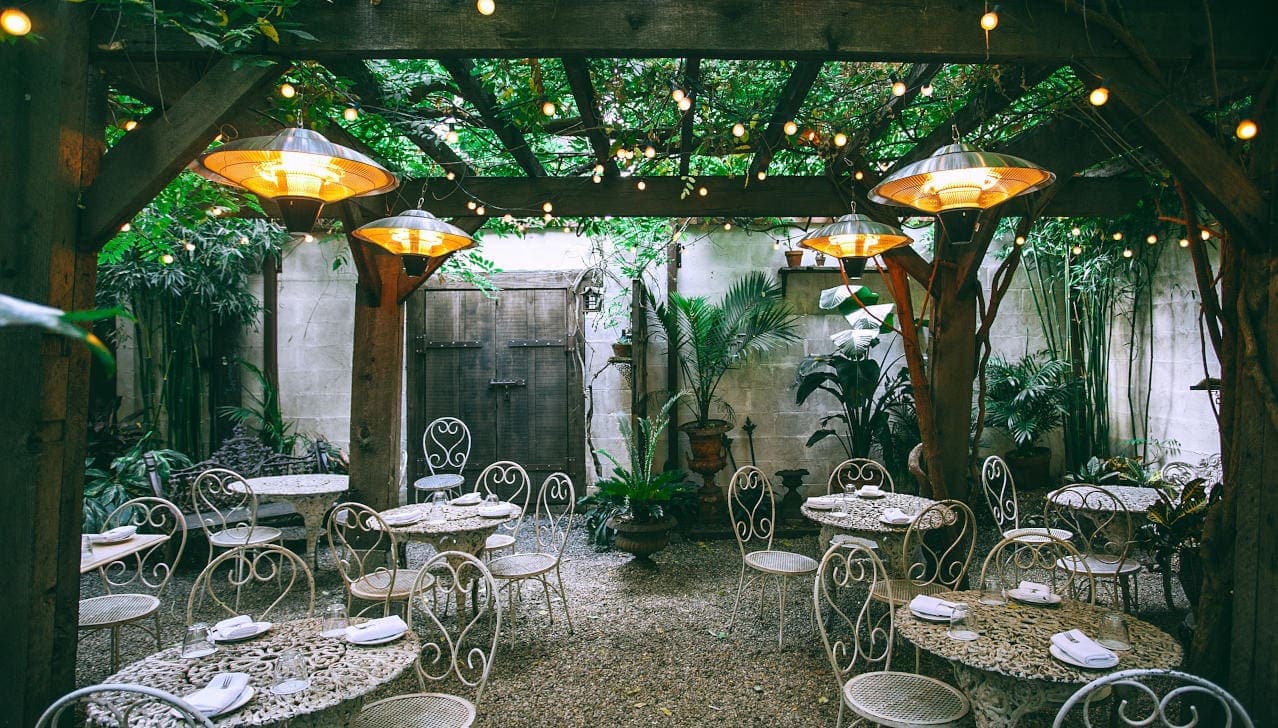Remember the days when dining out in your favourite Toronto restaurant was as easy as tapping an app on your phone to make a reservation? Back then (okay it’s only been 14 months but it seems like a lifetime ago, right?), travel and restaurant experiences were a way of life for most of us. Then came COVID-19 and with it, seemingly endless restrictions that practically shut down the travel industry. That caused hoteliers and restaurateurs to quickly pivot their business plan or face ruin.
Related: Toronto Interior Design Show: The future of kitchen design is all about sustainability
Luckily, there is light at the end of the tunnel and the second half of 2021 is looking brighter. As more people get vaccinated, it won’t be long before the world opens up again. Soon we’ll be hopping on a plane, checking into a hotel or spending an evening out with friends dining at our favourite restaurant. But what will that picture actually look like? Will we be able to feel safe as we enter a local eatery?
Canada’s best luxury website covers the Toronto’s Interior Design Show
At this year’s Toronto Interior Design Show, held from May 10-12, the overall theme was sustainability in architecture, construction and design. On the morning of Tuesday, May 11, moderator Elizabeth Pagliacolo, editor-in-chief of AZURE magazine, hosted a panel of experts to discuss something a little different: how restaurants, hotels and other communal commercial spaces will have to respond to the new challenges and opportunities ahead in a post-COVID reality.
The designers and specialists on the panel have managed to weather the last 14 months. And with their clients, they have begun to consider new frameworks and design layouts, both indoors and out, to enter into a post-pandemic era. With an eye toward emerging trends, they are creatively exploring how to welcome patrons back into a safe restaurant and hotel environment.
On the panel were Kristen Lien, a designer and principal at Frank; Anita Modha, strategy and design at Seeds + Growth, Otto Design group; and Matt Davis, co-founder of the Design Agency.
Pause, re-evaluate, restart
It’s been a tough 14 months. Without exception, the panelists agreed that since March 2020, the pandemic has created a troubling mixture of chaos and disappointment. However with that dark cloud came a silver lining – the time to step back and rethink the way the hospitality industry works. With that open-mindedness came renewed opportunities and eventually, excitement.
“This past year, I think for clients and designers alike, was the whole idea of a great reset and that the rut we’ve been living in is on pause. You got to rethink basically everything,” says Modha. “A lot of our spaces and the way they were designed were based on maybe outdated models of thinking. By being able to reframe what the future looks like in a way that is meaningful, that provides connection, that really speaks to safety, health and wellness, I think the options are [now] limitless.”
Optimizing outdoor space
In spite of all the challenges and unknowns still ahead, there was a strong feeling among the panelists that the public is eager to embrace the in-restaurant dining experience again. When that time comes, many industry players will be ready to welcome the crowds with design changes specifically geared toward health and safety.
But the changes will go farther than that. Much is being done to take into consideration weathering a possible fourth or fifth wave, or another pandemic in the future. To do that, it means changing the way in which a restaurant designs its indoor and outdoor spaces.
Designers ramping up Toronto restaurants for a new world
“I would say it’s not so much about interiors, it’s that the appropriation of outdoor space is becoming really prevalent,” explains Lien about the role designers are taking on as strategists for restaurant design. “People feel comfortable in a social setting when they are outside. I would say the last year has really challenged us, especially as Canadians, to use outdoor space in new and unconventional ways as well as really thinking about a food program and how that can provide a takeout food service.
“There is that component of design that talks about branding and take away and how you’re going to service a takeout crowd.”
“This past year, I think for clients and designers alike, was the whole idea of a great reset and that the rut we’ve been living in is on pause. You got to rethink basically everything. A lot of our spaces and the way they were designed were based on maybe outdated models of thinking. By being able to reframe what the future looks like in a way that is meaningful, that provides connection, that really speaks to safety, health and wellness, I think the options are [now] limitless.”
Ghost kitchens and an uptick in takeout and delivery
Other innovative ideas that are becoming popular down south, like in Miami and Hollywood but are already a reality in places like Toronto, are ghost kitchens and town halls. These collaborative hospitality spaces work well on the industry side, since sharing spaces is cost effective, but also for the public. It opens up many opportunities for dining, whether in a restaurant or at home through delivery.
“It’s been really interesting how people have been adapting,” says Davis. “The most popular term is ghost kitchen to produce a bunch of different menus for delivery. The idea of the ghost kitchens is that there is one place where different brands work out of.”
A new spin on an old concept
The town hall option is a new take on the old food court concept and expands the possibility of eateries. In this scenario, instead of landlords signing six or 10-year leases to one restaurant, it’s all about subletting space in the building for three to six months for a variety of pop-up kitchens and eateries who wish to test-proof a concept and the possibly of taking it to a larger space.
Taking that concept one step further, especially with reference to delivery and takeout, new restaurant designs would to “adopt a hybrid model of design that they may not have considered in the past,” explains Modha. “An interior eating space plus purposely using square footage inside for a delivery and takeout option.”
Optimism, opportunities and the future
“It’s an exciting time for designers,” says Davis. “It will be a time of innovation, hyper competitive for the various operators. And they will have to be very clever to work with their designer.”
As for the public, Lien feels as Toronto restaurants and hotels re-open, they will happily come back to the eateries they love. “The reality now is if we can design it, people will enjoy the space and feel safe.”
TOP IMAGE: By Maria Orlova from Pexels

Marlene Eisner is a freelance writer and editor. She is currently the editor of RENO+DÉCOR magazine (National) and New Home + Condo Guide magazine (Vancouver). She also writes, edits and publishes content for websites and edits master’s and PhD theses and memories.








